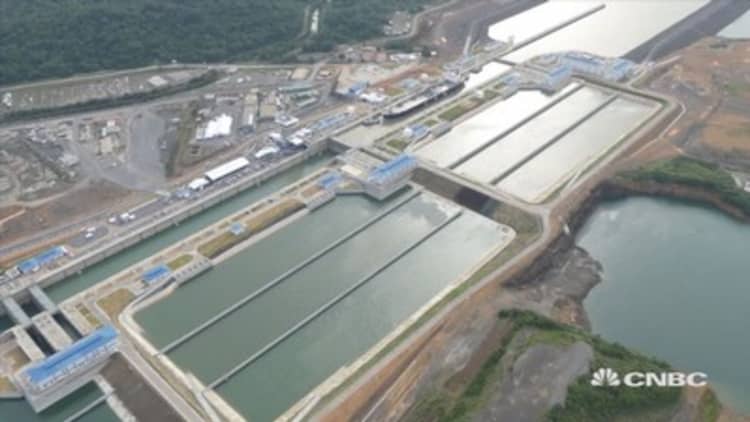
Roughly 80 kilometers long, the Panama Canal connects the Atlantic and Pacific oceans. A wonder of modern engineering and design, 13,000 to 14,000 vessels pass through the canal each year.
By reducing the distance ships need to travel to reach their destination, the canal helps to reduce fuel consumption and, in turn, greenhouse gas emissions. During its lifetime, it has helped prevent the emission of around more than 700 million tons of carbon dioxide (CO2).
The shipping industry has an impact on the environment. In 2012, international shipping was responsible for an estimated 796 million tons of CO2 emissions — around 2.2 percent of total global CO2 emissions that year, according to the International Maritime Organization.
"The original Panama Canal was built between 1904 and 1914, a 10-year effort," Jorge L. Quijano, CEO of the Panama Canal Authority, told CNBC's "Sustainable Energy."
"We are basically a short cut between the Atlantic and Pacific and to do this we use locks — so you go up 85 to 87 feet in elevation. Then you cross the continental divide on the lake (Gatun Lake) and you come down to zero-level elevation, which is… the Atlantic Ocean."
The impact of the canal on the shipping industry has been significant — so much so that a specific type of cargo ship, the Panamax, has been designed to fit its dimensions. "It's basically a vessel that's 106 foot wide and… 965 foot long," Quijano said.
Between 2009 and 2016, an extensive construction project saw the canal undergo a significant expansion when a third lane was built. This allows a larger type of vessel, the Neopanamax, to pass through. At the end of July, the 4,000th Neopanamax vessel transited through the expanded canal.
"We're now looking at a vessel size that can carry as much as three times the numbers of containers that you could carry on the old Panamax locks," Quijano said.




